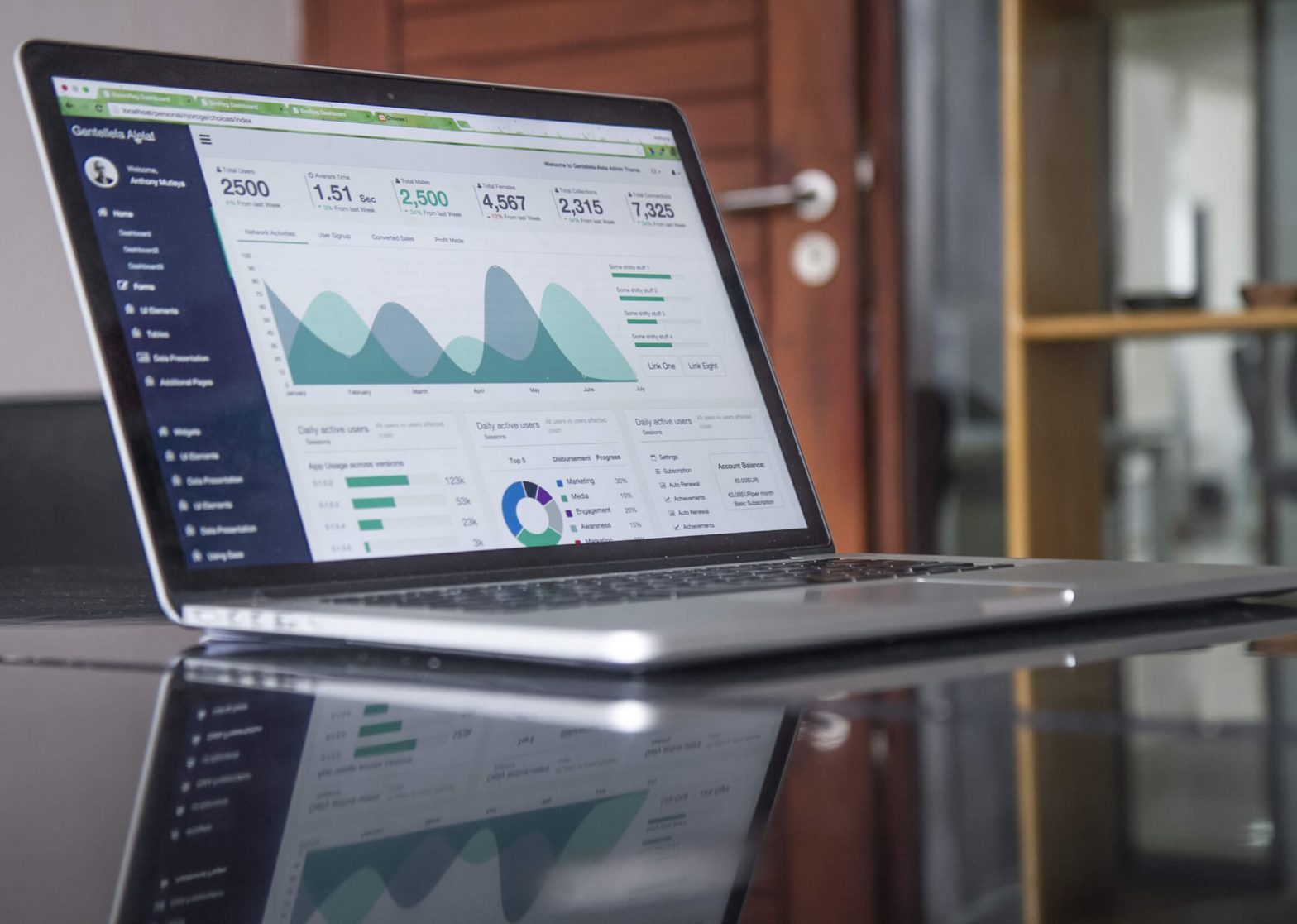Why Data Analytics is Important to the Healthcare Industry
July 31, 2021 By: Komal Dangi

Healthcare data analytics has been in the spotlight more than ever in 2020 as healthcare agencies, hospitals, and state governments have been tracking COVID-19 cases and using those numbers to make decisions about how to respond to the ongoing pandemic. Everything from case counts to space available at local hospitals to predictions for the future of the pandemic are relying on healthcare analytics.
The importance of data analytics in healthcare isn’t only evident during a pandemic or times of emergency. The use of analytics is widespread, tracking and turning patient data into usable information that help show trends and problematic issues – everything from birth rates and opioid overdoses to how many nurses a hospital will need to hire can be gleaned from healthcare analytics.
Data analytics are being used in nearly all areas of healthcare including: reducing harm to patients, improving patient care and population health, predicting and responding to needs for increased staffing, and reducing healthcare costs.
Analytics Reduce Harm to Patients
Tracking healthcare data analytics is playing a big role in reducing harm to patients, including medication errors, healthcare-associated infections, and missed appointments or tests.
The Centers for Medicare & Medicaid Services (CMS) relies on healthcare analytics for nearly every project funded through its Quality Improvement Organizations (QIOs). During its contract cycle that ran from 2014 to 2019, CMS used data analytics to help improve the rates of readmissions and healthcare-associated infections in hospitals, reduce the use of antipsychotic medication in nursing homes, and improve blood pressure control and diabetes care in physician clinics.
Healthcare data analytics are now being used by CMS to battle the opioid epidemic and further improve care in hospitals.
But CMS isn’t the only healthcare organization using data to decrease misuse or abuse of opioids. Healthcare insurance providers have teamed up with data analysts to find a way to predict the possibility of an opioid misuse problem before it happens.
Electronic health records (EHRs), which are the computer systems used to store all patient health data, are being improved to send alerts when a patient has prescribed a combination of medications that could cause serious injury or death. Currently, these systems are only about 66 percent effective at catching life-threatening medication mistakes, but healthcare data analytics is helping to improve this rate.
Analytics Improve Patient Care and Population Health
Healthcare data analytics have shown that the care received by patients is only a small fraction of what keeps them healthy. Social determinants of health have been shown to have a much larger impact on health outcomes than healthcare alone.
In fact, social determinants of health factors account for about 80 percent of health factors, while access to healthcare and quality of care received only account for about 20 percent. Social determinants of health include education, income, employment, family and social support, community safety, air and water quality, housing and transit, tobacco use, diet and exercise, alcohol and drug use, and sexual activity.
Studying data analytics in healthcare has allowed researchers to determine the factors that impact health, and at what levels. Knowing and understanding these factors allows health systems, community organizations, government, and others to implement plans to improve health that go beyond traditional healthcare.
Improving patient care is another big area where healthcare data analytics are being used. As more and more areas of healthcare are moved online (telemedicine) and done through EHRs, the more readily accessible data about patient care becomes. This data can be used to evaluate practitioner performance, patient satisfaction, and health outcomes.
Being able to predict issues and when a patient might need care is where data analytics in healthcare is paving the way for the future. Ways healthcare analytics will be able to improve patient care in the future include mining patient health records, using wearable technology (like smartwatches), being able to monitor and collect information on patients on home, and decreasing medication errors.
In an interview with Patient Safety & Quality Healthcare, Christopher Rafter, chief operating officer of Tampa-based Inzata Analytics, says:
“Being able to predict health conditions based on population characteristics combined with personalized monitoring and take preventive actions to avoid costly emergency visits is a major cost saver for the entire system. Wearable health monitors, smart pill bottles, and virtual patient consultations provide physicians with better data about how their patients are doing and allow them to spot and treat patients before physical symptoms appear.”
Analytics Predict Increased Staffing Needs
While the role of technology in healthcare has increased dramatically, there’s one thing that hasn’t been replaced yet – direct patient care.
Human doctors, nurses, aides, and other medical professionals are crucial to the success (or failure) of the healthcare system. As we’ve seen during the COVID-19 pandemic, staffing plays a critical role in making sure patients receive the care they need. Intensive care units (ICUs) aren’t any better than a regular hospital bed without the highly trained nurses and doctors that staff those units.
Healthcare data analytics can be used to predict surges in patients, allowing hospitals to adjust staffing beforehand and avoid being understaffed when the need is the highest. Not only can ICU units use this data, but many other areas of the hospital can also leverage it, such as labor & delivery and surgery units.
Data can also be used to predict longer-term nursing and physician needs, allowing nursing schools and other medical trainers to recruit the right number of people to ensure staffing levels can be met in the future.
Analytics Reduce Healthcare Costs
Anyone who has ever received a hospital bill can likely agree that costs are a concern. The cost of healthcare has been on the rise for years, and many reports have shown that healthcare is one of the biggest expenses for families in the United States. Not only that, but rising costs have been reported to keep people from getting care early on, leading to more expensive emergency care down the road.
There has been a lot of effort in recent years to improve the cost of care through sharing cost data with the public, showing physicians how they compare with others in their areas, and using patient data to help those with chronic illnesses avoid costly emergency room visits.
Total Cost of Care
The Network for Regional Healthcare Improvement (NRHI) has been working to measure and report total cost of care for several years now by partnering with healthcare organizations to compile healthcare data into reports for physicians and the public. The reports show the total cost of care for each physician along with several other factors, including the complexity of patients and patient care. Data has shown that the factors driving healthcare costs vary from region to region.
Healthcare data analytics is also being used to reduce costs by decreasing repeat or unnecessary testing, decreasing readmissions to the hospital, and reducing emergency room visits. Studies have shown that unnecessary testing in healthcare adds billions of dollars to healthcare costs, and one report stated that costs are as high as $210 billion per year.
Price Transparency
Price transparency is another area where data analytics in healthcare is working to make a difference. Many organizations are pushing for better price transparency when it comes to the cost of procedures, tests, and other healthcare services, which allows patients to make decisions about what they deem is best.
Don Berwick, president emeritus and senior fellow at the Institute for Healthcare Improvement, says:
“We have really good data that show when you take patients and you really inform them about their choices, patients make more frugal choices. They pick more efficient choices than the health care system does.”
The Future of Cost Savings
It’s easy to see that the future of healthcare is in data analytics. Everything from patient care to staffing is dependent on knowing and understanding the data. Without data analytics in healthcare, tracking disease trends (like flu season, increased cases of diabetes, etc.) would be impossible.
Patient trends and outcomes would be difficult to improve. Costs of care and drugs wouldn’t be available to physicians or consumers, and competition wouldn’t be able to drive down those costs. Surges in staffing needs would be impossible to predict and prepare for.
Without healthcare data analytics, any improvement in care, costs, or any other category would be difficult to quantify. Healthcare needs analytics to continue improving, evolving and providing the best care for patients possible.



Leave a Comment
Your email address will not be published. Required fields are marked *